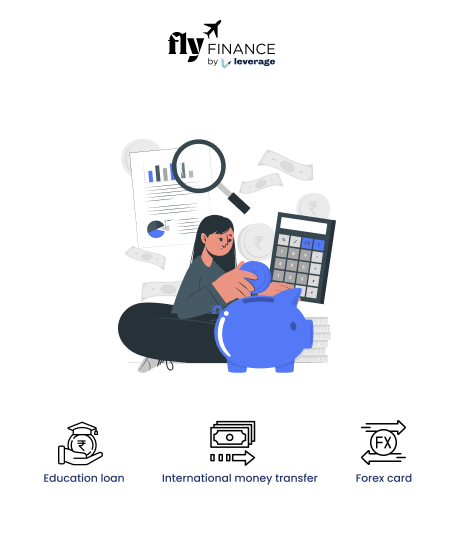Ever wished you had more time before making a decision? Well, in banking, you do. The cooling period in banking gives you a crucial pause to rethink necessary actions like adding a new payee or signing a loan agreement. It’s your chance to catch mistakes and avoid fraud.
But that’s not all. Cooling periods in UPI and education loans also give you time to review and adjust before committing. Curious to know how this simple tool can save you from costly errors? Let’s explore more about what the cooling period in banking means and how it works.
Table of contents
What is the Cooling Period in Banking?
A cooling period in banking is a time frame given to customers to reconsider transactions and decisions they have made. This period allows time for the customer to pause, review, and ensure that they have made the right financial decision.
A cooling period in banking typically applies when a customer adds a new beneficiary for fund transfers or when entering into a loan agreement. This period, depending on the bank, could range from a few minutes to several days.
For example-
- A cooling period in banking gives the borrower a chance to cancel or modify the loan agreement without facing major financial penalties or repercussions.
- When using UPI (Unified Payments Interface) services, a cooling period in UPI ensures that no funds are transferred immediately after adding a new beneficiary.
Types of Cooling Periods in Banking
In banking, a cooling period refers to a mandatory waiting time before certain actions can be completed. It is implemented for security reasons and to prevent fraud. Below are the common types of cooling periods in banking:
Education Loan Cooling Period in Banking
This is the waiting period after applying for a loan before the funds are disbursed. Banks use this time to verify the applicant’s documents, credit history, and eligibility.
Borrowers can use this period to reconsider the loan agreement since committing to such a significant amount can feel overwhelming. In the meantime, one may look for red flags in education loan agreements and avoid any potential loan issues.
- Purpose: To provide students time to review loan terms, interest rates, and repayment schedules.
- How It Helps: You can cancel or modify the loan terms if they don’t align with your needs without facing penalties.
- Relevance to International Students: For students planning to study abroad, the cooling period can help ensure they’re not stuck with unfavorable loan conditions.
Cooling Period for Personal Loans
When you apply for a personal loan, some banks offer a cooling-off period. This allows you to cancel the loan without facing any penalties.
- Purpose: This gives borrowers time to reconsider their decision and avoid any rash financial commitments.
- How It Helps: If you find a better loan option or change your mind about taking the loan, you can back out within this period.
- Duration: The cooling period is typically a few days, depending on the bank.
Also Read: Bulk Charges in Indian Bank: Meaning, Types, How to Avoid
Cooling Period After Adding a Beneficiary
When you add a new beneficiary to your bank account, a cooling-off period kicks in. This gives you time to verify the details of the beneficiary before any funds are transferred.
- Purpose: Prevent fraudulent activities and mistakes in transferring money.
- How It Works: You cannot make transactions to the newly added beneficiary until the cooling period expires.
- Duration: The cooling period can last from a few minutes to several hours or days, depending on the bank’s policies.
Cooling Period for UPI Payments
UPI (Unified Payments Interface) is widely used for transferring money, and it also comes with a cooling period when adding a new payee.
- Purpose: Protect users from unauthorized or accidental transfers.
- How It Works: After adding a new beneficiary via UPI, you can’t immediately make payments to them. The cooling period ensures the details are correct and allows you to cancel the beneficiary if needed.
- Duration: The time frame can vary, but it’s typically a short period (from 30 minutes to 24 hours).
Cooling Period for Different Banks
Most banks implement a cooling period ranging from 30 minutes to several days to enhance security against unauthorized transactions.
The cooling period for loans can vary significantly, ranging from 3 days to 30 days. It is based on the type of loan availed and the specific terms and conditions set by each bank.
Check out the cooling period for new beneficiaries and loans for different banks.
| Bank Name | Cooling Period for New Beneficiary | Cooling Period for Loans |
| SBI | 4 days | 3 to 7 days after disbursement |
| Canara Bank | 30 minutes to 4 hours | 7 to 14 days |
| YES Bank | 30 minutes to 24 hours | 14 days |
| ICICI Bank | 24 hours | 15 days from disbursement |
| Axis Bank | 30 minutes | 30 days from the date of booking |
| HDFC Bank | 30 minutes (additional 30 minutes) | 3 days from loan disbursement date |
| Kotak Mahindra Bank | 30 minutes | 15 days to 30 days |
Also Read: How to Change the Phone Number in the Bank Account?
How to Remove the Cooling Period in the Banks?
While cooling periods in banks are generally implemented as a security measure to protect both customers and banks, it’s important to know that these periods can’t always be completely removed.
However, there are a few ways to minimize or avoid certain cooling periods, depending on the situation and bank policies. Here’s how you can approach it:
For UPI Beneficiary Addition
In the case of UPI (Unified Payments Interface), the cooling period is designed to protect you from fraud. Unfortunately, this cooling-off period cannot usually be removed, as it’s a security feature enforced by the bank. However, you can:
- Add Beneficiaries in Advance: If you know you’ll be making frequent transactions to a specific person, you can add them as a beneficiary well in advance, allowing the cooling period to pass before you need to make a transaction.
- Verify Beneficiary Details: Ensure the beneficiary details are correct before adding them so you don’t need to make changes once they are added and avoid delays caused by the cooling period.
For Personal Loans and Education Loans
Cooling periods for personal loans and education loans to study abroad are generally offered as a way to protect the borrower. These periods allow you to reconsider your decision and withdraw or modify the loan agreement. In most cases, cooling periods cannot be waived; however, you can:
- Read Loan Terms Carefully: Ensure you fully understand the loan terms before signing. This can reduce the likelihood of needing to use the cooling period later.
- Choose Instant Loan Approval Options: Some lenders might offer “instant approval” loans, which may have shorter cooling periods or more flexible terms. However, this may vary depending on the bank.
For Cooling Period After Adding a Beneficiary
If you want to remove or shorten the cooling period after adding a beneficiary, there is typically no way to bypass it unless the bank allows for a quicker review of the added details. Here’s what you can do:
- Check Bank Policies: Some banks may offer expedited beneficiary verification for certain accounts or relationships (like corporate accounts), which could shorten or remove the cooling period.
- Use Immediate Payment Options: Some banks might offer faster processing for smaller or internal transfers that don’t require a cooling period, depending on their policies.
FAQs
The cooling period in Canara Bank for new beneficiaries typically lasts between 30 minutes to 4 hours. During this period, you cannot transfer funds to a newly added beneficiary, allowing you time to verify the details before making any transactions.
The cooling period exists to prevent unauthorized transactions, fraud, and errors. It allows time to verify information before proceeding with a financial transaction. This ensures that everything is accurate and secure, safeguarding both the customer and the bank.
The cooling period in SBI (State Bank of India) for new beneficiaries is 4 days. This waiting period gives you the chance to verify the beneficiary’s details before initiating a transaction. Additionally, for loans, the cooling period is generally 3 to 7 days after disbursement.
In SBI, a cooling period of 4 days is implemented after adding a new beneficiary, during which no transactions can be made to that beneficiary. For loans, the cooling period lasts for 3 to 7 days after disbursement. This helps prevent fraud and mistakes in transactions.
A cooling period limit of 5,000 means that after adding a new beneficiary, a customer may be restricted to transferring a maximum of INR 5,000 until the cooling period expires. This is a security feature to limit high-risk transactions during the verification phase.
The cooling period in SBI cannot be completely removed as it is a security feature. However, you can minimize delays by ensuring the beneficiary’s details are correct before adding them. You also might be able to shorten the waiting period by verifying beneficiary details early.
The cooling period in Canara Bank can’t be entirely removed. However, the duration can range from 30 minutes to 4 hours, depending on the type of transaction. Verifying beneficiary details in advance can help speed up the process, though the cooling period itself is enforced for security reasons.
The cooling period for new beneficiaries in YES Bank generally ranges from 30 minutes to 24 hours. During this time, you cannot make transactions to the new beneficiary, which gives you time to ensure the details are accurate and prevent potential fraud.
The cooling period in ICICI Bank for new beneficiaries is 24 hours. After adding a new beneficiary, you’ll need to wait 24 hours before making any fund transfers to ensure the beneficiary’s details are correct and secure.
The cooling period in SBI and Canara Bank cannot typically be bypassed, as these periods are in place to protect against fraud and ensure secure transactions. However, ensuring all beneficiary details are accurate and added in advance can reduce unnecessary delays.
The cooling period for new beneficiaries prevents unauthorized transactions and fraud. It gives the customer time to verify the beneficiary’s details before transferring funds.
No, the UPI cooling period is a mandatory security feature enforced by the bank. However, adding beneficiaries in advance can help you avoid delays when making transactions.
The NatWest loan cooling-off period allows customers to cancel their loan agreement without facing penalties within a certain time frame. This period typically ranges from a few days after the loan is agreed upon.
To learn more about education loans, the best bank accounts for students, forex, banking experience for global students, or international money transfers, reach out to our experts at 1800572126 to help ease your experience with studying abroad.
Follow Us on Social Media





























